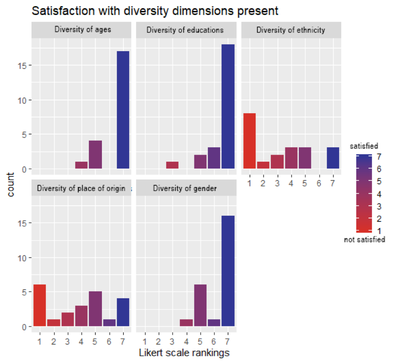Exploring diversity and inclusion among protected area staff members in Armenia with a mixed methods approach
Judith Rakowski
The discussion about nature conservation increasingly recognizes the importance of
social equity (SE) for protected areas (PAs), as inequity has shown to threaten
conservation outcomes. Despite their crucial role in implementing conservation
measures, research on the role of employees of PAs in conservation is scarce.
In this study I investigate diversity and inclusion as indicators for SE among employees
in four Armenian PAs. The goals are to assess a) diversity and decision-making
(DM) structures, b) employees’ perception of diversity in connection to working
effectiveness and c) employees’ perception of inclusion. I employ a mixed-methods
approach with 16 semi-structured interviews, 25 questionnaires, and observations.
Therefore, qualitative content analysis, cross-tabulation, and inter-method
triangulation are applied.
My findings suggest that there are two groups of employees that vary in terms of
gender, education and experience: Office and Law enforcement. DM seems
hierarchically structured with unequal participation opportunities for the two
groups. Barriers appear pronounced for employees with lower formal education
and for women. Furthermore, my findings indicate that diversity is perceived and
valued, yet other factors are seen as more relevant for working effectiveness.
Mismatching statements imply malfunctioning of communication channels
between hierarchy levels. This could indicate loss of information and decreased
work performance. My results on inclusion differ greatly between formal and
informal research methods, pointing at strong hierarchies, exclusive team
atmospheres and apprehension of employees to criticize DM structures. I draw the
conclusion that leadership is of high importance for diversity and inclusion in PA
staff teams, because this position can influence social and organizational structures
and attitudes that affect all other staff. Consequently, leadership plays a crucial role
for team atmosphere, teamwork, and team performance, which seem likely to be
relevant for overall PA effectiveness.

